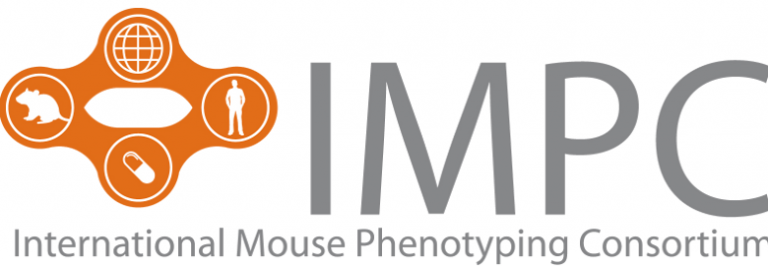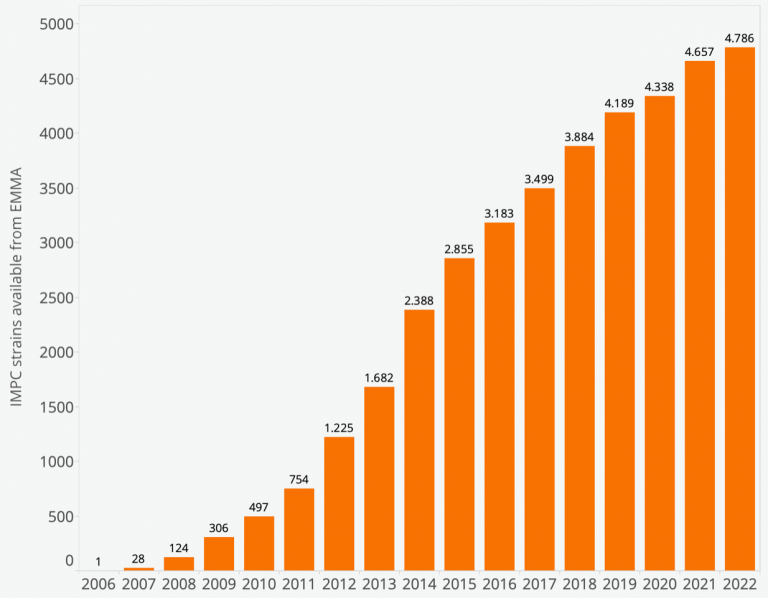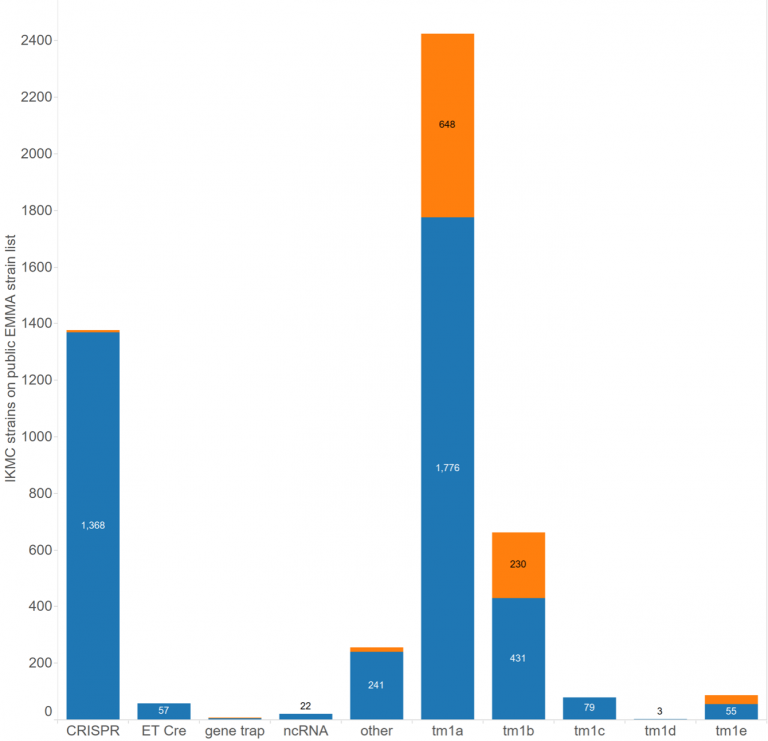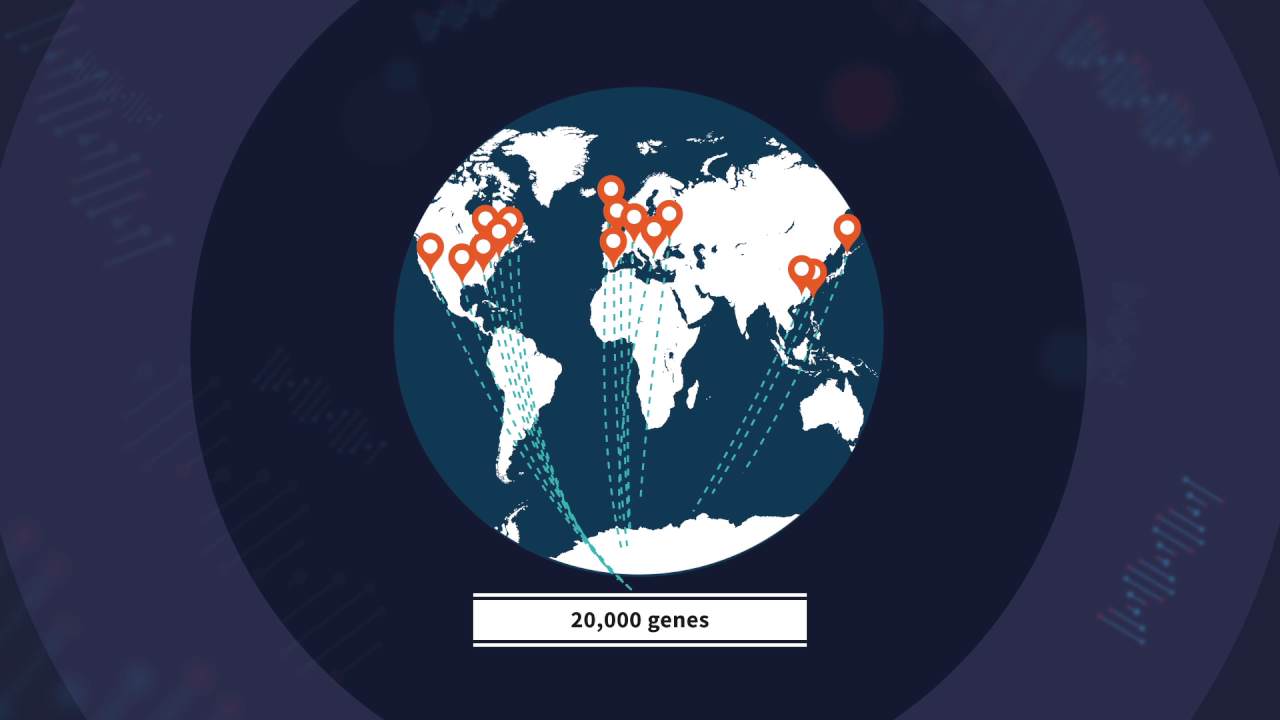
The International Mouse Phenotyping Consortium (IMPC) and INFRAFRONTIER
Since many years, INFRAFRONTIER closely cooperates with IMPC – the largest and most important scientific consortium for mouse phenotyping in the world.
The following nine INFRAFRONTIER partner institutes make up the European members in the IMPC network, contributing with mutant mouse strains and their phenotypic analyses to the vast IMPC database:
- Helmholtz Munich (German Mouse Clinic, GMC)
- Czech Centre for Phenogenomics (CCP)
- MRC Harwell Institute
- PHENOMIN-ICS
- Universitat Autònoma de Barcelona (UAB)
- Consiglio Nazionale delle Ricerche (CNR)
- European Bioinformatics Institute (EMBL-EBI)
- The Centre for Phenogenomics (TCP)
- National Centre for Biotechnology (CNB-CSIC)
Together, INFRAFRONTIER and IMPC have developed many of the standardised procedures for systemic phenotyping of knockout mouse strains. Outstanding scientists in both consortia have published a large series of ground-breaking scientific papers in many different disease areas.
Background
One of the most important tools at our scientific disposal in understanding mammalian gene function is the laboratory mouse. The scientific community has taken advantage of its fundamental similarity to humans at the genetic level (>95% at the gene level), its similar physiology and anatomy, its relative low cost compared to other mammals, and nearly 100 years of genetic study.
There is an extensive toolkit for the manipulation of the mouse genome and the generation of new disease models. After completing the mouse genome sequence, an international consortium was developed, the International Knock-out Mouse Consortium (IKMC) to systematically generate mutant ES cells for every gene in the mouse genome (20,000 plus genes).
The IMPC builds on the efforts of IKMC to produce knockout mice and carry out high-throughput phenotyping of each line in order to determine the function of every gene in the mouse genome. These mice will be preserved in repositories and made available to the scientific community representing a valuable resource for basic scientific research as well as generating new models for human diseases.
The approaches that are being developed build on the efforts of a number of pilot programs around the world such as the EUMODIC program and the MGP program. The European EUMODIC consortium generated and phenotyped 500 mouse strains in a high-throughput fashion. This was completed early in 2012.
From 2012, the IMPC took over the task to generate knockout mice and phenotype the remainder of the 20,000 plus genes in a worldwide coordinated initiative.
IMPC Goals
- Establish a world-wide consortium of mouse centres with capacity and expertise for large-scale primary phenotyping.
- Establish a world-wide consortium of mouse production centres to generate germ line transmission of targeted knockout mutations in embryonic stem cells for all known and predicted mouse genes.
- Test each mutant mouse line (4,000 mouse lines in the first 5 years, and ultimately up to 20,000) through a broad-based primary phenotyping pipeline in all the major adult organ systems and most areas of major human diseases. Through this activity and employing data annotation tools, systematically aim to discover and ascribe biological function to each gene, driving new ideas and underpinning future research into biological systems.
- Establish collaborative “networks” with specialist phenotyping consortia or laboratories, providing standardized secondary phenotyping that enriches the primary dataset, and end-user, project specific tertiary level phenotyping that adds value to the mammalian gene functional annotation and fosters hypothesis driven research.
- Provide a centralized data centre and portal for free, unrestricted access to primary and secondary data by the scientific community, promoting sharing of data, genotype-phenotype annotation, and the development of open-source data analysis tools.
A Globally Available Shared Mouse Resource for Archiving and Distribution from INFRAFRONTIER / EMMA and IMPC
The Knock-out Mouse Consortium (IKMC) was developed after the completion of the mouse genome sequence to systematically generate mutant ES cells for every gene in the mouse genome (more than 20,000 genes). The IMPC builds on the efforts of IKMC in developing these knockout mice and carries out high-throughput phenotyping of each line to functionally characterise every gene in the mouse genome. These strains are cryopreserved in various mouse repositories and are readily available to the global research community. A majority of these strains are archived and distributed via INFRAFRONTIER / EMMA nodes. Nearly half of the strains archived in EMMA are IMPC strains with an average of about 390 submissions per year during 2015 – 2022 (shown below).

Among these IKMC/IMPC strains, the majority are Tm1a – knockout-first allele and CRISPR-generated strains (shown below). The latter are expected to increase significantly in the upcoming years owing to the widespread use of CRISPR-Cas9 in the generation of mouse models. Orange segments denote strains with available IMPC phenotyping data and blue are strains without IMPC phenotyping data.

Currently, INFRAFRONTIER / EMMA is the largest distributor of IKMC / IMPC mouse strains with about an average of 350 shipments per year.
Additional Material

IMPC Overview Video